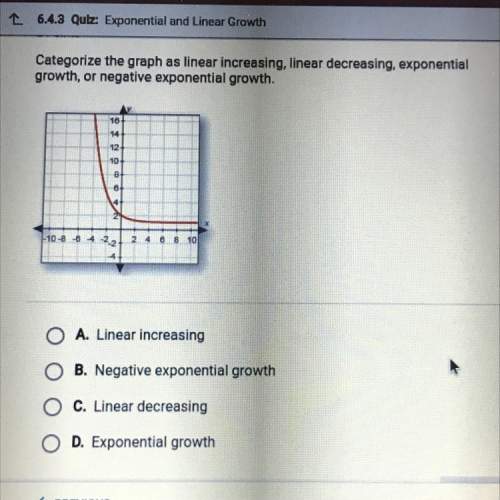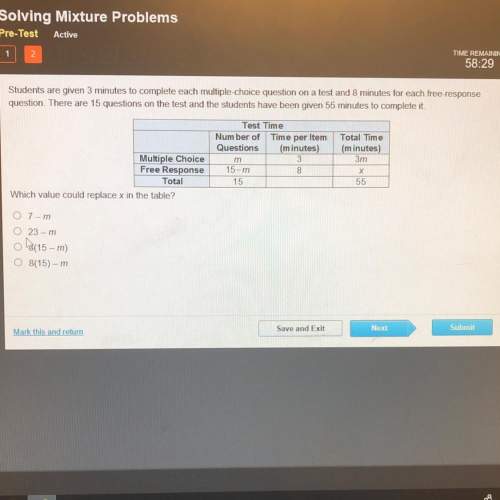Use the compound interest formula A=P(1+r/n)^nt
If $10,000 is invested at 2 percent semi...

Mathematics, 23.03.2020 01:42 jessica6597
Use the compound interest formula A=P(1+r/n)^nt
If $10,000 is invested at 2 percent semi-annually for 5 years, what is the amount at the end of the term?
$11,052
$11,049
$11,046
$11,051
If $10,000 is invested at 2 percent monthly for 5 years, what is the amount at the end of the term?
$11,052
$11,049
$11,046
$11,051
How much money would you have in a savings account at the end of one year, if you saved $1000 at two percent interest compounded quarterly? Round to the nearest dollar.
$1018
$1082
$1020
$1050

Answers: 1


Another question on Mathematics

Mathematics, 21.06.2019 22:00
If abcde is reflected over the x-axis and then translated 3 units left, what are the new coordinates d? are he re
Answers: 1

Mathematics, 22.06.2019 04:50
What is the squate root of r^64 needa r^4 b r^8 c r^16 d r^32
Answers: 2

Mathematics, 22.06.2019 05:30
The speeders soccer team charged $12 to wash each car at a fundraiser car wash.the team collected a total of $672 by the end of the day.how many cars did the deal wash?
Answers: 3

Mathematics, 22.06.2019 07:30
The table below shows the number of color pages a printer prints out over a period of time. printed pages in color time (min), x 2 6 8 18 number of pages, y 3 9 12 27 what is the constant of variation?
Answers: 2
You know the right answer?
Questions



Mathematics, 02.12.2019 20:31

Biology, 02.12.2019 20:31

Mathematics, 02.12.2019 20:31




















